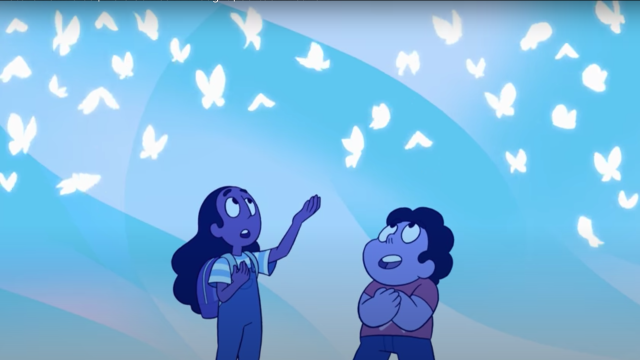Watching my favourite program until my eyes fall out has its benefits, especially during the pandemic. When emotions are high, television has been a healthy escape and comfort throughout the quarantine. I’ve had in-depth conversations on why I’m not a fan of Molly from Insecure, or how I relate to Craig of the Creek a little too much. I can identify with characters and see myself in their struggles, helping me get through my own mental hurdles.
A 2018 study in “media marathoning” (or binge-watching, in layman’s terms) confirms what many of us already know, that those “struggling with depression or anxiety were able to learn more about human relationships through media and to use media engagement experiences as springboards for communication.” Watching a fictional character go through something similar to you provides an outside perspective; and, for me, cartoons in particular foster catharsis in a nonthreatening and relatable way.
Dr. Brian Kong, PsyD specialises in pop culture and therapy, and shared his expertise on the benefits of watching cartoons that deal with depression. “I think television is sometimes capable of portraying an emotional experience in a richer, nuanced, and more accessible way,” Kong states. “There is value to a medium that visually deviates from our everyday reality and immerses us in an alternate imaginary world.”
Use complex characters for self-reflection
Rick Sanchez, a mad scientist on the popular Adult Swim show Rick and Morty, and BoJack Horseman, the washed-up actor of Netflix’s BoJack Horseman, are both complex characters who internalise the weight of their destructive behaviour. In the episode “Rest and Ricklaxation,” Rick and Morty take a day to relax and end up having their toxic selves physically removed from their bodies and must be reunited with the worst of themselves to be whole once again. In the BoJack Horseman’s episode “The Face of Depression,” BoJack is confronted with the outcome of his hurtful behaviour while his seemingly upbeat and friendly counterpart Mr. Peanut Butter becomes the “Face of Depression.”
Both episodes display a nuanced look at what we deem are our “best” and “worst” parts, and the shows’ points of view play “contrary to the often oversimplified categorical concept of being a good or a bad person,” Kong remarks. Depression has many faces, and BoJack Horseman and Rick and Morty pull apart the layers that help viewers identify and relate. “It can be very powerful and validating to see your emotional struggle illustrated on TV,” says Kong.
Reframe your personal struggle
Adventure Time is about Finn, a young boy, and his magic dog, Jake, in their quest to be heroes in the land of Ooo. The main villain, The Ice King, wears a magical crown to live forever and, in turn, the crown erased his memories, leaving him alone and incapable of socially interacting with others. Meanwhile, Finn uses his bravery and upbeat personality to avoid dealing with trauma.
Both characters exhibit different elements of depression, and while they’re in a fantastical, fictional land, their tales serve as a mirror to the real world and how people interact with mental illness. “Especially in the case of more creative shows like Adventure Time or Futurama, cartoons can engage our imagination in a way that — despite being fantasy — can help us think about life and our own lives in different ways, which can be essential to reframing one’s struggles,” Kong explains.
Help “de-identify” with depression
Steven Universe is the story of Steven, a half-human, half-alien being called a “Crystal Gem.” He and the other Crystal Gems defend the earth from alien forces, but the real force they fight is self-doubt, depression, and relationships. Steven Universe has helped me out of intense breakdowns and given me tools to both acknowledge my circumstances and understand my feelings.
One song featured on the show called “Here Comes a Thought” in the episode titled “Mindful Education,” where one of Steven’s friends named Connie has a depressive moment. The song reminds her it is just a thought — that the emotions are real, but that they don’t have to consume her.
Another cartoon, Big Mouth, is known for personifying the anxieties of puberty through imaginary characters. A “depression kitty” is introduced to one character in the episode “The Department of Puberty,” and influences her to neglect her responsibilities by watching Friends reruns and eating ice cream instead. The kitty then lays on her chest, preventing Jessie from moving, symbolising the crippling effects of depression.
“There are schools of thought in psychology, such as Acceptance and Commitment Therapy, that provide empirically supported interventions that aid individuals in separating themselves from their depressive or anxious thoughts and maintain a more distanced, mindful attitude. Big Mouth and Steven Universe tap into that general understanding in a way that can be accessible to the viewer,” says Kong. “While it is important not to oversimplify depression or other mental health issues, ‘de-identifying’ with your thoughts and feelings can be integral to not feeling consumed or trapped in them, and ultimately letting them go.”

Leave a Reply
You must be logged in to post a comment.